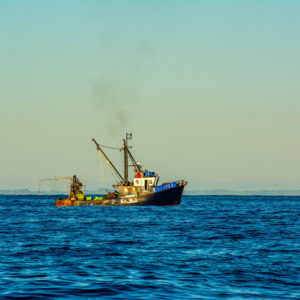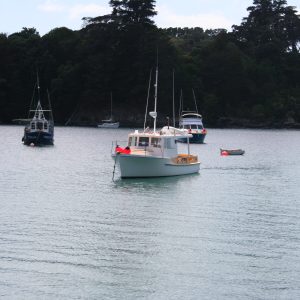
Tarakihi stocks on the eastern coasts of both islands are so depleted that the Minister of Fisheries must implement a rebuild plan before October 2018, and recreational fishing is in the firing line. Decades of trawling, dumping and high grading have taken their toll. Major catch reductions are required between Otago and North Cape if we are to rescue these stocks, and all Kiwis are being asked to pay the price.
Depletion of public assets affects all New Zealanders. When it comes to depleting a natural resource such as fisheries the social, economic and cultural effects are more profound. That is because tarakihi were once a prolific species spanning both islands.
Tarakihi are a popular fish to catch, eat and share amongst family and friends. Tarakihi are now rarely available from shore. In some areas tarakihi are only available in deep water pockets of abundance miles offshore, or by spending lots of your hard-earned cash at the shop or restaurant.
LegaSea is concerned that all Kiwis are expected to pay the price for the rebuild when excessive commercial fishing (responsible for more than 90% of fish harvested) and years of knowingly wasteful fishing practices are responsible for the decline.
Minister of Fisheries Stuart Nash is now considering new catch limits for tarakihi. LegaSea wants him to make a decision that has the best outcome for the fish, but he will only make a precautionary decision if he has public support. LegaSea is calling on all Kiwis to stand up for the environment and health of our fisheries by asking the Minister to take Time Out for Tarakihi.

Time Out for Tarakihi
Time Out is required because tarakihi stocks have fallen to an all-time low. Early attempts by recreational interests to limit exploitation fell on deaf ears. Instead, commercial interests were gifted additional catching rights via a government-sanctioned programme. This scheme enabled more than 400 tonnes of extra, annual catch to be allocated to commercial fishers, all while recreational fishing for tarakihi was declining. For example, last year commercial fishers overcaught their quota by more than double the total estimated recreational harvest in the area between Cape Runaway and Wellington and west up to Porirua Harbour.
Under current settings, the Minister sets aside 652 tonnes every year to ‘allow for’, or enable, recreational tarakihi fishing off the east coast of Aotearoa. In the last assessment, it was estimated we collectively caught only 211 tonnes. Whilst we acknowledge the 652 tonnes was most likely a ‘best guess’ back in the day, it does, however, highlight the depletion that has occurred since the Minister first decided to set aside tarakihi for our recreational fishing interests.
Protection of recreational fishing was required because the Ministry has known since day one of the Quota Management System that tens of thousands of undersize tarakihi are killed and dumped every year due to the prevalent ‘discard culture’ in mixed trawl fisheries. In 2014 the Director of Fisheries Management admitted to his colleagues that they “can’t quantify the tonnages involved but we suspect they are significant to the point that they are impacting on stocks” .He went on to say, “We estimate that if we found the golden bullet to stop discarding, we would probably put over half of the inshore fleet out of business overnight through a lack of ACE availability to cover by-catch”.
Now a formal plan is required to rebuild the stock within 10 years. Ministry has proposed a complex table of options for catch reductions, including a 20-year rebuild or a phased 3-year reduction programme that obviously has a lot of appeal to commercial interests. That is because the last time they managed to secure a 3-year deal, for bluenose, they managed to convince the Ministry and Minister that the third and final cut was not required. Consequently, bluenose stocks dived and another rebuild plan was implemented years after it was required. For slow-growing, long-lived species a phased reduction is not a conservative option.
To add to the woes of poor public access to healthy tarakihi stocks, the Ministry is suggesting that tarakihi are taken out of the mixed finfish daily bag limit. They have done some ‘pre-consultation’ and established there is support for a species-specific bag limit. Clearly, other sectors see recreational fishing as a soft target even though we harvest less than 5% of all catch.
We must stand up for ourselves and tarakihi abundance.
LegaSea is urging you to support the Minister in making a conservative decision for the future management of tarakihi. We have created some simple tools to enable you to have your say. Please visit the website, read the data, follow the 1,2 3 steps and ask the Minister to take Time Out for Tarakihi.





